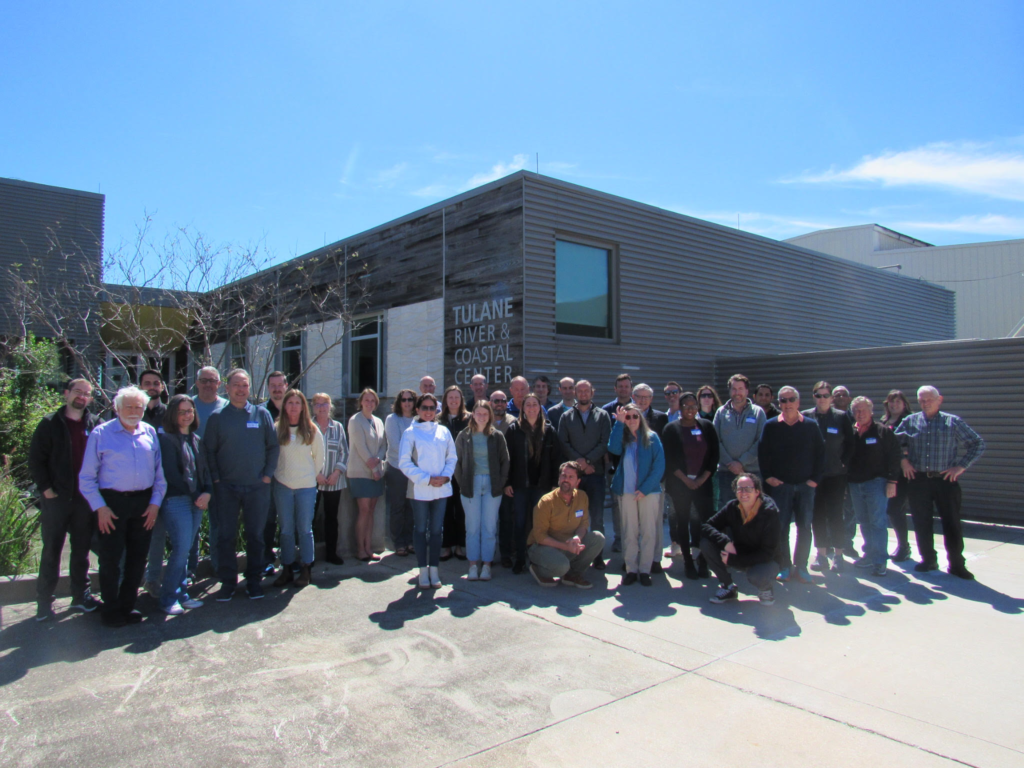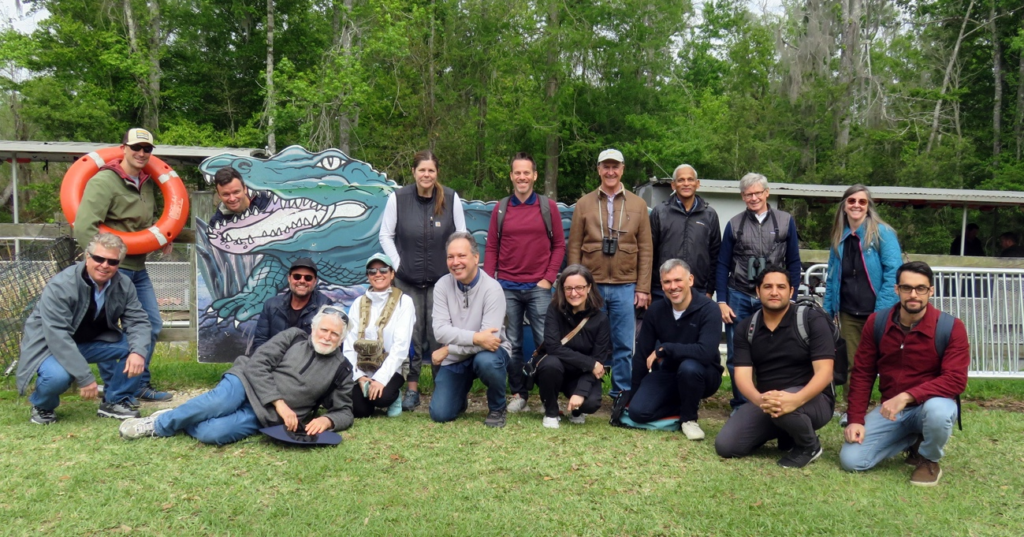The Marine Biodiversity Observation Network (MBON; https://marinebon.org/) hosted the annual US MBON All-Hands Workshop in New Orleans, Louisiana, March 18-22, 2024. We are celebrating the tenth anniversary of the implementation of the first US MBON pilot projects!
The MBON is an open community of practice in which all can participate, contribute, and from which all can benefit. The goal of the meeting was to strengthen collaborations among the US MBON projects and stakeholders in local and national government agencies. We discussed how the MBON can identify gaps in information and human capacity, support applications using biodiversity and ecosystem observations, and how to develop better products for resource management. An important focus was advancing data management strategies to support user needs. We were honored to have participants from the US and international offices of OBIS, GBIF, and FishBase in the meeting, in addition to participants from multiple US Federal Government agencies, and State resource management agencies, and the private sector.
As part of the annual meeting, experts discussed how to advance marine species distribution modeling (SDM) (March 21-22, 2024). The group included the AquaX team which is advancing the historic work of AquaMaps, data management discussions, and a conversation on possible standards for inputs and outputs to enable ensemble SDM analysis. The group discussed establishing a Species Distribution Model – Model Intercomparison Project (SDM-MIP) to complement the Fisheries and Marine Ecosystem Model Intercomparison Project (FISH-MIP) that is linked to the work of the Intergovernmental Panel on Climate Change (IPCC) and climate MIP efforts.
MBON continues to make significant progress through a series of Working Groups and its leadership of the Marine Life 2030 Programme (https://marinelife2030.org/) of the UN Decade of Ocean Science for Sustainable Development, and the close collaboration with the MBON Secretariat led from the AIR Centre in the Azores (Portugal) and strong collaborations with the GEO BON, the Global Ocean Observing System (GOOS), OBIS, GBIF, and other partners around the world.
Current US MBON Working Groups include:
- eDNA: environmental DNA (lead: Luke Thompson)
- DMAC: Data Management and Cyberinfrastructure (lead: Matt Biddle)
- Remote sensing/seascapes (leads: Dan Otis, Eurico D’Sa, Maria Kavanaugh)
- BioTrack (leads: Neil Hammerschlag, Megan McKinzie/ATN)
- BioSound (lead: Neil Hammerschlag)
- Indicators (lead: Ben Best) (Cross-linked with NOAA CPO Sanctuaries Indicators TF)
- Ecosystem function (leads: Katrin Iken, Nathan Furey)
- (Emerging WG) Stakeholder engagement and communications (leads: TBD; initial efforts led by Chris Simoniello, Jorge Brenner/GCOOS, Jen Dorton/SECOORA, Nathan Furey)
US MBON continues to work closely with the MBON Secretariat to interact with the international community via the Marine Biodiversity Networking Fridays (https://www.aircentre.org/netfridays-marine-biodiversity-01/).
MBON Team Meeting group picture:

The MBON team visited the Jean Lafitte National Historical Park and Preserve located near New Orleans. The adventurous group that loves risk (“Danger is our business!”) is pictured below. We saw many alligators, a variety of birds including a very large owl, and other local wildlife. We saw all from the safety of a swamp boat guided by a very funny captain who assured us he would be the first one to abandon the boat and leave us to distract the alligators, if anything were to happen.

